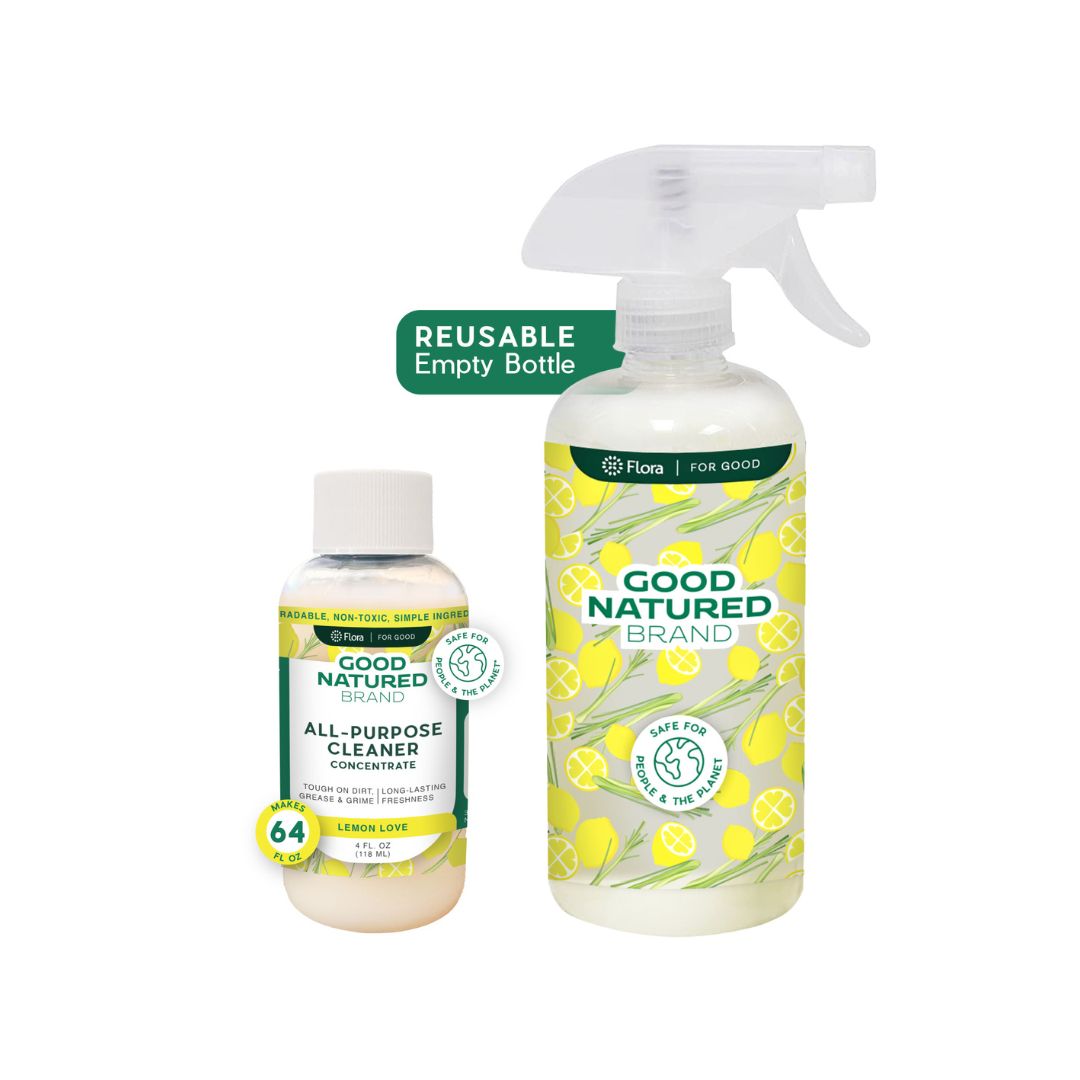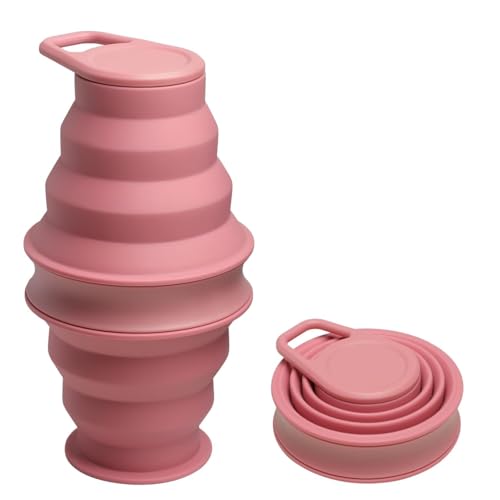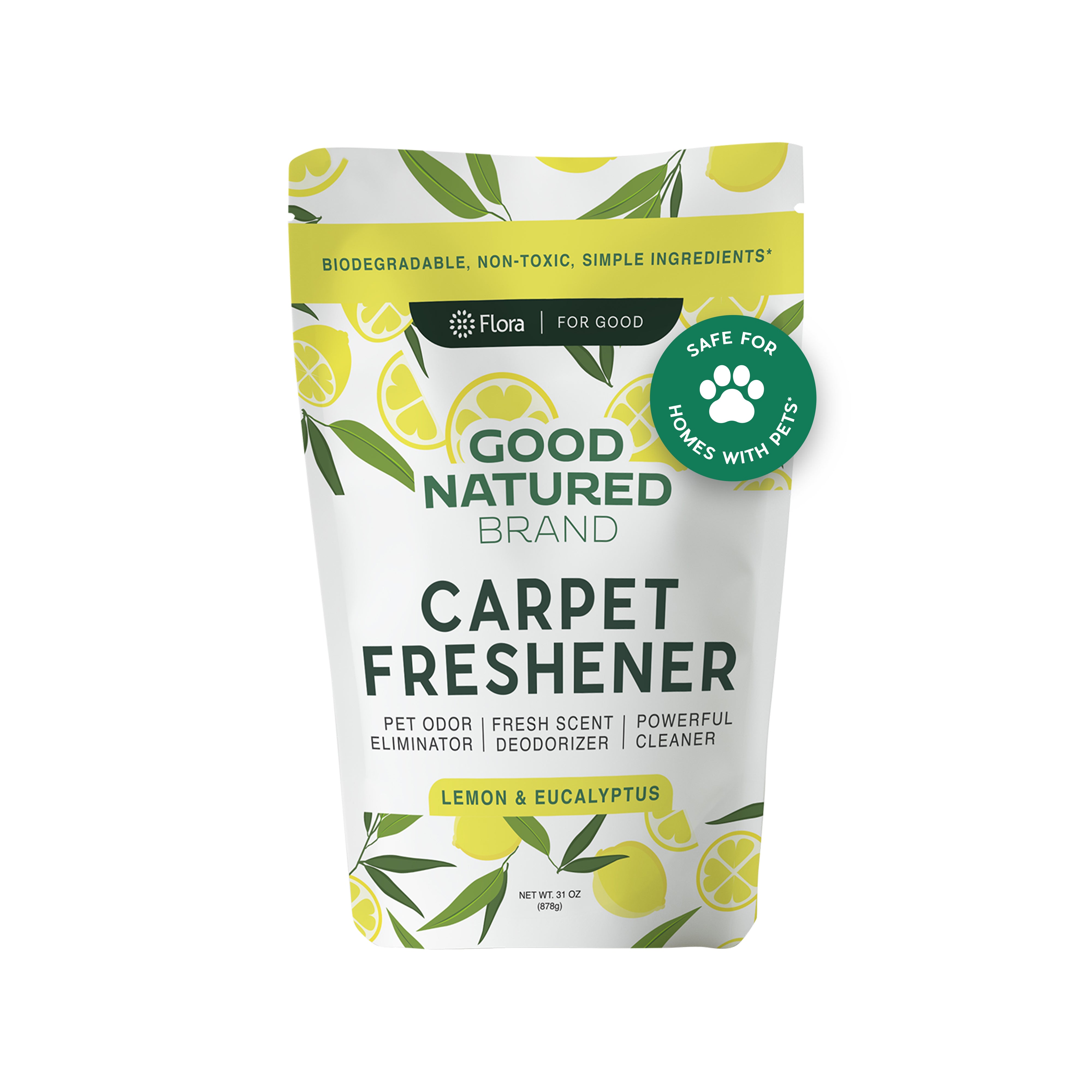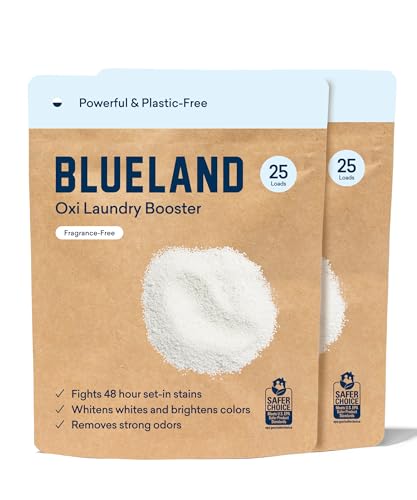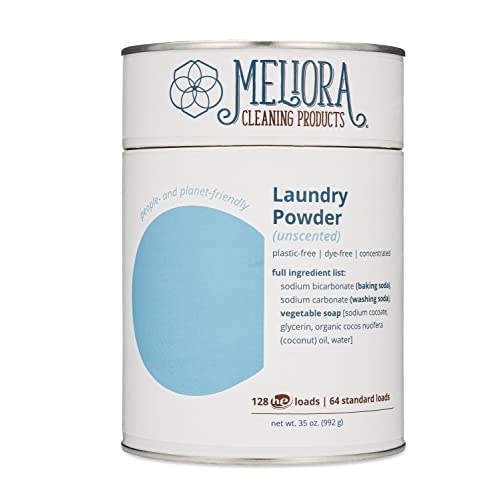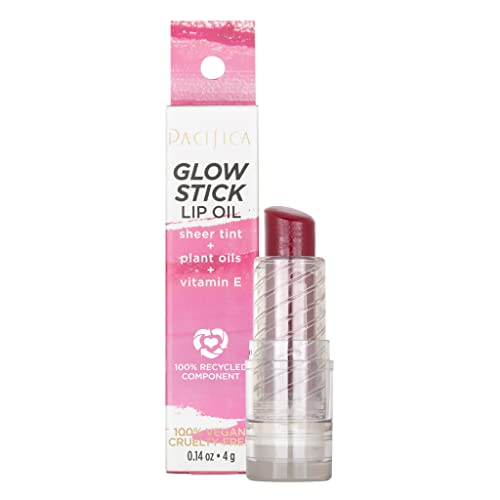
Pacifica Lip Oil - Hydrating Shine with Plant Oils & Vitamin E, Crimson Crush - 0.14oz


Unspecified Flavor
Medium RiskUnspecified flavor refers to a term used by cosmetic manufacturers to denote a flavoring component in products. This ingredient functions primarily to enhance the sensory experience of the product, providing a pleasant taste or scent without specifying the exact composition of the flavoring agents used.
Sustai Insights
Unspecified flavor serves as an effective sensory enhancer in cosmetic products, adding taste or aroma without revealing specific ingredients. However, it may pose low health risks, including potential allergens or irritants, with no significant carcinogenic or reproductive toxicity concerns. Environmentally, it is not known to be bioaccumulative or a notable pollutant. Regulatory bodies impose minimal restrictions on its use. Given these factors, the overall risk level is assessed as medium, necessitating cautious use and consideration of potential safer alternatives.
Tocopheryl Acetate
Medium RiskTocopheryl acetate is a chemical compound that serves primarily as a form of Vitamin E. It is used in cosmetic and personal care products for its antioxidant properties and to enhance skin stability and moisture.
Sustai Insights
Tocopheryl acetate is valued for its functional benefits, including acting as an antioxidant and skin conditioning agent. It is generally considered to have low carcinogenicity and reproductive toxicity risk, although it poses a moderate concern for allergies. Environmental risks are minimal, with no significant pollutant or bioaccumulation potential noted. Regulatory bodies have not imposed significant restrictions. Safe usage practices should be followed, particularly regarding enhanced skin absorption. Alternatives like natural Vitamin E may provide similar benefits with potentially lower allergenic properties. Overall, this ingredient presents a medium risk assessment.
Dibutyl Lauroyl Glutamide
Low RiskDibutyl lauroyl glutamide is a substituted glutamic acid derivative commonly used as a surfactant and emulsifier in cosmetic formulations. It aids in stabilizing products by enhancing texture and solubility, contributing to overall formulation efficacy.
Sustai Insights
Dibutyl lauroyl glutamide offers functional benefits as an emulsifier, improving product stability and texture. It is considered low-risk regarding health concerns such as carcinogenicity, allergies, and reproductive toxicity. Environmentally, it does not contribute significantly to pollution or bioaccumulation. Regulatory bodies have not issued significant warnings, supporting its low-risk classification. Safe usage practices should be followed, with no notable alternatives reported. Overall, the ingredient scores low on risk assessments.
Curcuma Longa (Turmeric) Root Extract
Low RiskCurcuma longa (turmeric) root extract is an extract from the turmeric plant, commonly used for its coloring and potential health benefits in various products. It is recognized for its active compound, curcumin, which is studied for its anti-inflammatory and antioxidant properties.
Sustai Insights
Curcuma longa (turmeric) root extract is valued for its functional benefits, including potential anti-inflammatory and antioxidant effects, contributing positively to formulations. It is biodegradable and often sustainably sourced. Health risks are low, with no significant concerns regarding carcinogenicity or irritation. Environmental risks are minimal, with no evidence of bioaccumulation. Regulatory bodies have not placed restrictions on its use, supporting a low-risk assessment overall. Safe usage practices should be adhered to, but there are few concerns for sensitive populations. Alternatives like ginger extract may provide similar benefits.
Azadirachta Indica Leaf Extract
Low RiskAzadirachta indica leaf extract, commonly known as neem leaf extract, is derived from the leaves of the neem tree. It is utilized in various cosmetic and personal care products for its potential benefits, including antimicrobial, anti-inflammatory, and skin-soothing properties.
Sustai Insights
Neem leaf extract offers functional benefits such as antimicrobial properties and potential skin soothing effects, contributing to product efficacy. It is sustainably sourced and biodegradable. Health risks are minimal, with low concerns regarding carcinogenicity, allergies, and reproductive toxicity. Environmental impact appears negligible, with no indications of being a significant pollutant or bioaccumulative. Currently, there are no regulatory restrictions. Overall, the ingredient presents a low risk profile, making it a suitable option in formulations.
Methylheptyl Isostearate
Low RiskMethylheptyl isostearate is an ester derived from caprylic acid and isostearic acid, commonly used in cosmetic formulations as an emollient and skin-conditioning agent. It enhances product texture and helps to improve skin feel without leaving a greasy residue.
Sustai Insights
Methylheptyl isostearate serves as an effective emollient, providing a smooth application and improving skin conditioning. It has low health risks, with minimal concerns regarding carcinogenicity, allergies, and developmental toxicity. Environmentally, it poses low risks, as it is not bioaccumulative or considered a pollutant. Currently, there are no specific regulatory restrictions on its use. Overall, the ingredient presents a low risk profile, making it a favorable choice in product formulations.
Solanum Melongena (Eggplant) Fruit Extract
Low RiskSolanum melongena (eggplant) fruit extract is derived from the fruit of the eggplant plant, commonly used in cosmetic and personal care products for its antioxidant properties and skin-conditioning effects. It serves as a natural ingredient known for its potential to enhance product efficacy.
Sustai Insights
Solanum melongena (eggplant) fruit extract provides functional benefits such as antioxidant properties and skin conditioning, contributing positively to product formulations. It is sustainably sourced, presenting minimal environmental concerns. Health risks are low, with no significant adverse effects documented. Regulatory status shows no restrictions. Overall, the ingredient is assessed as low risk, making it a safe choice in cosmetic applications.
Shea Butter Ethyl Esters
Low RiskShea butter ethyl esters are derived from shea butter and serve primarily as emollients in cosmetic formulations, enhancing the texture and moisturizing properties of products. They are often used in creams, lotions, and other personal care items for their ability to improve skin feel and hydration.
Sustai Insights
Shea butter ethyl esters provide effective moisturizing benefits, enhancing product texture while being sustainably sourced. Scientific assessments indicate low health risks, with minimal concerns regarding carcinogenicity, allergies, or reproductive toxicity. Environmentally, they are not classified as pollutants or bioaccumulative. Regulatory status is clear with no current restrictions, leading to an overall low-risk assessment. Safe usage is recommended in standard concentrations, and greener alternatives exist, though this ingredient remains a viable option.
Dibutyl Ethylhexanoyl Glutamide
Low RiskDibutyl ethylhexanoyl glutamide is a synthetic compound primarily used in cosmetic formulations as a surfactant and emulsifier. It helps to improve the texture and stability of products, facilitating the blending of oil and water-based ingredients.
Sustai Insights
Dibutyl ethylhexanoyl glutamide exhibits low health risks, with negligible concerns regarding carcinogenicity, allergies, or reproductive toxicity. Environmentally, it is not classified as a pollutant or bioaccumulative. Regulatory assessments indicate no current restrictions. Overall, it presents a low risk profile, supporting safe usage in formulations with appropriate practices. Alternatives may include naturally derived emulsifiers for those seeking greener options.
Aloe Barbadensis (Aloe Vera) Flower Extract
Low RiskAloe barbadensis (aloe vera) flower extract is derived from the flowers of the aloe vera plant. It is utilized in cosmetic formulations for its potential soothing and moisturizing properties.
Sustai Insights
Aloe barbadensis flower extract offers functional benefits such as hydration and skin soothing. It is considered low risk for health concerns, including carcinogenicity and allergies, with minimal regulatory restrictions. Environmental impact is also low, with no significant pollutant or bioaccumulation concerns. Overall, the ingredient presents a low-risk profile for consumer use, making it a suitable choice in cosmetic products.
Coccinia Indica Fruit Extract
Low RiskCoccinia indica fruit extract is an extract derived from the fruit of the Coccinia indica plant, commonly used in cosmetic and personal care products for its potential benefits in skin health and hydration.
Sustai Insights
Coccinia indica fruit extract is noted for its moisturizing and skin-soothing properties, which can enhance product efficacy. It is sustainably sourced and has low toxicity concerns, indicating minimal health risks such as carcinogenicity or allergies. Environmental impacts are also low, with no significant pollutant potential. Regulatory reviews show no restrictions on its use. Overall, the ingredient presents a low risk profile, making it a suitable choice in formulations.
Octyldodecanol
Low RiskOctyldodecanol is a long-chain fatty alcohol commonly used in cosmetic formulations. It serves primarily as an emollient and thickening agent, contributing to the texture and feel of products while enhancing skin moisture retention.
Sustai Insights
Octyldodecanol is valued for its emollient properties, enhancing skin hydration and product texture. It is generally considered low-risk regarding carcinogenicity, allergies, and reproductive toxicity. Moderate irritation may occur with skin, eye, or lung exposure. It poses minimal environmental hazards, with no bioaccumulation concerns. Regulatory status is favorable, with no significant restrictions. Overall, it is assessed as low risk, with safe usage practices recommended, and alternatives like octyl palmitate may be considered.
Azadirachta Indica Flower Extract
Low RiskAzadirachta indica flower extract, derived from the flowers of the Neem tree, is commonly used in cosmetics and personal care products for its potential soothing and anti-inflammatory properties. It serves as a botanical extract, contributing to the formulation's overall efficacy.
Sustai Insights
Azadirachta indica flower extract offers functional benefits such as soothing properties and potential antimicrobial effects, contributing positively to formulations. It is sustainably sourced and biodegradable. Health risks are considered low, with minimal concerns regarding carcinogenicity, allergies, or reproductive toxicity. Environmental impact is also low, with no significant bioaccumulation or pollution noted. Regulatory bodies have not imposed restrictions on its use. Overall, the ingredient presents a low risk profile, making it a favorable choice in product formulations.
Corallina Officinalis Extract
Low RiskCorallina officinalis extract is derived from a red algae species commonly found in marine environments. This extract is utilized in cosmetic formulations for its potential skin benefits, including hydration and antioxidant properties, contributing to the overall efficacy of the product.
Sustai Insights
Corallina officinalis extract serves as a skin-conditioning agent, promoting hydration and providing antioxidant benefits. It is considered low risk regarding health concerns, with minimal potential for carcinogenicity, allergenic reactions, or reproductive toxicity. Environmentally, it poses low risks as it does not significantly contribute to pollution or bioaccumulation. Regulatory assessments indicate no major restrictions on its use. Safe usage practices should be followed, and while alternatives exist, this ingredient presents a favorable profile overall, leading to a low risk assessment.
Ocimum Sanctum Leaf Extract
Low RiskOcimum sanctum leaf extract is an extract derived from the leaves of the Ocimum sanctum plant, commonly known as holy basil. It is used in various products for its potential health benefits and functional properties, including its role as an antioxidant and its use in traditional medicine.
Sustai Insights
Ocimum sanctum leaf extract offers functional benefits such as antioxidant properties and potential support for immune health. It is generally recognized as safe, with low concerns regarding carcinogenicity, allergy, and reproductive toxicity. Environmental risks appear minimal, and it is not subject to significant regulatory restrictions. Overall, the ingredient is assessed to have a low risk level, making it a viable option in formulations. Users are encouraged to adhere to recommended usage levels, and alternatives are available if needed.
Diisostearyl Malate
Low RiskDiisostearyl malate is a diester derived from isostearyl alcohol and malic acid, primarily used as an emollient and skin-conditioning agent in cosmetic formulations. It is characterized by its ability to enhance texture and provide a smooth feel to products.
Sustai Insights
Diisostearyl malate offers several functional benefits, including improved emollience and product texture, making it desirable in cosmetics. It is not associated with significant health risks, having low concerns for carcinogenicity, allergies, and reproductive toxicity. Environmentally, it is not classified as a pollutant or bioaccumulative. Regulatory assessments indicate no current restrictions, supporting its safe use. Overall, the ingredient poses a low risk based on scientific consensus, with no substantial adverse effects identified. For those seeking alternatives, other emollients may serve similar purposes.
Zingiber Officinale (Ginger) Root Extract
Low RiskZingiber officinale (ginger) root extract is derived from the ginger plant, widely recognized for its use in culinary applications and traditional medicine. It serves various functions in products, including flavor enhancement and potential therapeutic benefits due to its bioactive compounds.
Sustai Insights
Ginger root extract offers functional benefits such as flavoring and possible anti-inflammatory properties. It is sustainably sourced and biodegradable. Health risks are low, with minimal concerns regarding carcinogenicity, allergies, or reproductive toxicity. Environmental risks appear low, with no significant pollutants. Regulatory status is favorable, with no major warnings. Overall, the risk level associated with ginger root extract is low, making it a suitable ingredient in various applications.
Water
Low RiskWater is a clear, colorless liquid essential for various biological processes. It serves as a solvent in formulations, facilitating the dissolution of other ingredients and enhancing product texture and application. Additionally, water plays a crucial role in hydration and is a key component in many cosmetic and personal care products.
Sustai Insights
Water is an effective solvent and hydrator, contributing to the texture and efficacy of formulations. It is biodegradable and generally regarded as safe, with low concerns regarding carcinogenicity, allergies, and reproductive toxicity. However, excessive water usage can lead to environmental concerns, particularly regarding resource depletion. Regulatory bodies do not impose restrictions on water use in cosmetics. Overall, the risks associated with water are low, making it a safe and essential ingredient.
Ci 77499
Low RiskCI 77499, also known as iron oxides, are inorganic pigments commonly used in cosmetic products for their coloring properties. They provide a range of shades and are often included for their stability and opacity, enhancing the visual appeal of formulations.
Sustai Insights
CI 77499 offers functional benefits as a stable colorant, contributing to product aesthetics without significant health risks, as concerns for carcinogenicity, allergies, and reproductive toxicity are low. However, it has high persistence and bioaccumulation potential in the environment, raising ecotoxicity concerns. Regulatory restrictions exist for certain uses. Overall, the ingredient presents a low risk profile when used according to safety guidelines, with alternatives available for those seeking greener options.
Helianthus Annuus (Sunflower) Seed Oil
Low RiskHelianthus annuus (sunflower) seed oil is derived from the seeds of the sunflower plant. It serves primarily as an emollient and moisturizer in cosmetic formulations, helping to maintain skin hydration and improve texture.
Sustai Insights
Sunflower seed oil is effective as an emollient, providing moisture and improving skin texture while being biodegradable and sustainably sourced. It poses low health risks, including negligible concerns for carcinogenicity, allergies, or reproductive toxicity. Environmentally, it does not significantly contribute to pollution or bioaccumulation. Regulatory bodies currently do not list any advisories for this ingredient. Overall, it is assessed as low risk, with safe usage practices recommended. Alternatives include oils like jojoba or almond oil for those seeking different properties.
Simmondsia Chinensis (Jojoba) Seed Oil
Low RiskSimmondsia chinensis (jojoba) seed oil is extracted from the seeds of the jojoba plant. It is commonly used in cosmetics for its moisturizing properties and ability to mimic human sebum, making it beneficial for skin and hair care formulations.
Sustai Insights
Jojoba seed oil offers functional benefits such as effective moisturization and emollience, contributing to skin hydration and smoothness. It is sustainably sourced and biodegradable. Health risks are low, with minimal concerns regarding carcinogenicity, allergies, and reproductive toxicity. Environmental risks are also low, as it does not significantly contribute to pollution or bioaccumulation. Currently, there are no regulatory restrictions on its use. Overall, the risk level is low, and it is considered a safe ingredient with no significant adverse effects.
Dibutyl Lauroyl Glutamide
Low RiskDibutyl lauroyl glutamide is a substituted glutamic acid derivative commonly used as a surfactant and emulsifier in cosmetic formulations. It aids in stabilizing products by enhancing texture and solubility, contributing to overall formulation efficacy.
Sustai Insights
Dibutyl lauroyl glutamide offers functional benefits as an emulsifier, improving product stability and texture. It is considered low-risk regarding health concerns such as carcinogenicity, allergies, and reproductive toxicity. Environmentally, it does not contribute significantly to pollution or bioaccumulation. Regulatory bodies have not issued significant warnings, supporting its low-risk classification. Safe usage practices should be followed, with no notable alternatives reported. Overall, the ingredient scores low on risk assessments.
Curcuma Longa (Turmeric) Root Extract
Low RiskCurcuma longa (turmeric) root extract is an extract from the turmeric plant, commonly used for its coloring and potential health benefits in various products. It is recognized for its active compound, curcumin, which is studied for its anti-inflammatory and antioxidant properties.
Sustai Insights
Curcuma longa (turmeric) root extract is valued for its functional benefits, including potential anti-inflammatory and antioxidant effects, contributing positively to formulations. It is biodegradable and often sustainably sourced. Health risks are low, with no significant concerns regarding carcinogenicity or irritation. Environmental risks are minimal, with no evidence of bioaccumulation. Regulatory bodies have not placed restrictions on its use, supporting a low-risk assessment overall. Safe usage practices should be adhered to, but there are few concerns for sensitive populations. Alternatives like ginger extract may provide similar benefits.
Azadirachta Indica Leaf Extract
Low RiskAzadirachta indica leaf extract, commonly known as neem leaf extract, is derived from the leaves of the neem tree. It is utilized in various cosmetic and personal care products for its potential benefits, including antimicrobial, anti-inflammatory, and skin-soothing properties.
Sustai Insights
Neem leaf extract offers functional benefits such as antimicrobial properties and potential skin soothing effects, contributing to product efficacy. It is sustainably sourced and biodegradable. Health risks are minimal, with low concerns regarding carcinogenicity, allergies, and reproductive toxicity. Environmental impact appears negligible, with no indications of being a significant pollutant or bioaccumulative. Currently, there are no regulatory restrictions. Overall, the ingredient presents a low risk profile, making it a suitable option in formulations.
Methylheptyl Isostearate
Low RiskMethylheptyl isostearate is an ester derived from caprylic acid and isostearic acid, commonly used in cosmetic formulations as an emollient and skin-conditioning agent. It enhances product texture and helps to improve skin feel without leaving a greasy residue.
Sustai Insights
Methylheptyl isostearate serves as an effective emollient, providing a smooth application and improving skin conditioning. It has low health risks, with minimal concerns regarding carcinogenicity, allergies, and developmental toxicity. Environmentally, it poses low risks, as it is not bioaccumulative or considered a pollutant. Currently, there are no specific regulatory restrictions on its use. Overall, the ingredient presents a low risk profile, making it a favorable choice in product formulations.
Solanum Melongena (Eggplant) Fruit Extract
Low RiskSolanum melongena (eggplant) fruit extract is derived from the fruit of the eggplant plant, commonly used in cosmetic and personal care products for its antioxidant properties and skin-conditioning effects. It serves as a natural ingredient known for its potential to enhance product efficacy.
Sustai Insights
Solanum melongena (eggplant) fruit extract provides functional benefits such as antioxidant properties and skin conditioning, contributing positively to product formulations. It is sustainably sourced, presenting minimal environmental concerns. Health risks are low, with no significant adverse effects documented. Regulatory status shows no restrictions. Overall, the ingredient is assessed as low risk, making it a safe choice in cosmetic applications.
Unspecified Flavor
Medium RiskUnspecified flavor refers to a term used by cosmetic manufacturers to denote a flavoring component in products. This ingredient functions primarily to enhance the sensory experience of the product, providing a pleasant taste or scent without specifying the exact composition of the flavoring agents used.
Sustai Insights
Unspecified flavor serves as an effective sensory enhancer in cosmetic products, adding taste or aroma without revealing specific ingredients. However, it may pose low health risks, including potential allergens or irritants, with no significant carcinogenic or reproductive toxicity concerns. Environmentally, it is not known to be bioaccumulative or a notable pollutant. Regulatory bodies impose minimal restrictions on its use. Given these factors, the overall risk level is assessed as medium, necessitating cautious use and consideration of potential safer alternatives.
Shea Butter Ethyl Esters
Low RiskShea butter ethyl esters are derived from shea butter and serve primarily as emollients in cosmetic formulations, enhancing the texture and moisturizing properties of products. They are often used in creams, lotions, and other personal care items for their ability to improve skin feel and hydration.
Sustai Insights
Shea butter ethyl esters provide effective moisturizing benefits, enhancing product texture while being sustainably sourced. Scientific assessments indicate low health risks, with minimal concerns regarding carcinogenicity, allergies, or reproductive toxicity. Environmentally, they are not classified as pollutants or bioaccumulative. Regulatory status is clear with no current restrictions, leading to an overall low-risk assessment. Safe usage is recommended in standard concentrations, and greener alternatives exist, though this ingredient remains a viable option.
Dibutyl Ethylhexanoyl Glutamide
Low RiskDibutyl ethylhexanoyl glutamide is a synthetic compound primarily used in cosmetic formulations as a surfactant and emulsifier. It helps to improve the texture and stability of products, facilitating the blending of oil and water-based ingredients.
Sustai Insights
Dibutyl ethylhexanoyl glutamide exhibits low health risks, with negligible concerns regarding carcinogenicity, allergies, or reproductive toxicity. Environmentally, it is not classified as a pollutant or bioaccumulative. Regulatory assessments indicate no current restrictions. Overall, it presents a low risk profile, supporting safe usage in formulations with appropriate practices. Alternatives may include naturally derived emulsifiers for those seeking greener options.
Aloe Barbadensis (Aloe Vera) Flower Extract
Low RiskAloe barbadensis (aloe vera) flower extract is derived from the flowers of the aloe vera plant. It is utilized in cosmetic formulations for its potential soothing and moisturizing properties.
Sustai Insights
Aloe barbadensis flower extract offers functional benefits such as hydration and skin soothing. It is considered low risk for health concerns, including carcinogenicity and allergies, with minimal regulatory restrictions. Environmental impact is also low, with no significant pollutant or bioaccumulation concerns. Overall, the ingredient presents a low-risk profile for consumer use, making it a suitable choice in cosmetic products.
Coccinia Indica Fruit Extract
Low RiskCoccinia indica fruit extract is an extract derived from the fruit of the Coccinia indica plant, commonly used in cosmetic and personal care products for its potential benefits in skin health and hydration.
Sustai Insights
Coccinia indica fruit extract is noted for its moisturizing and skin-soothing properties, which can enhance product efficacy. It is sustainably sourced and has low toxicity concerns, indicating minimal health risks such as carcinogenicity or allergies. Environmental impacts are also low, with no significant pollutant potential. Regulatory reviews show no restrictions on its use. Overall, the ingredient presents a low risk profile, making it a suitable choice in formulations.
Octyldodecanol
Low RiskOctyldodecanol is a long-chain fatty alcohol commonly used in cosmetic formulations. It serves primarily as an emollient and thickening agent, contributing to the texture and feel of products while enhancing skin moisture retention.
Sustai Insights
Octyldodecanol is valued for its emollient properties, enhancing skin hydration and product texture. It is generally considered low-risk regarding carcinogenicity, allergies, and reproductive toxicity. Moderate irritation may occur with skin, eye, or lung exposure. It poses minimal environmental hazards, with no bioaccumulation concerns. Regulatory status is favorable, with no significant restrictions. Overall, it is assessed as low risk, with safe usage practices recommended, and alternatives like octyl palmitate may be considered.
Azadirachta Indica Flower Extract
Low RiskAzadirachta indica flower extract, derived from the flowers of the Neem tree, is commonly used in cosmetics and personal care products for its potential soothing and anti-inflammatory properties. It serves as a botanical extract, contributing to the formulation's overall efficacy.
Sustai Insights
Azadirachta indica flower extract offers functional benefits such as soothing properties and potential antimicrobial effects, contributing positively to formulations. It is sustainably sourced and biodegradable. Health risks are considered low, with minimal concerns regarding carcinogenicity, allergies, or reproductive toxicity. Environmental impact is also low, with no significant bioaccumulation or pollution noted. Regulatory bodies have not imposed restrictions on its use. Overall, the ingredient presents a low risk profile, making it a favorable choice in product formulations.
Corallina Officinalis Extract
Low RiskCorallina officinalis extract is derived from a red algae species commonly found in marine environments. This extract is utilized in cosmetic formulations for its potential skin benefits, including hydration and antioxidant properties, contributing to the overall efficacy of the product.
Sustai Insights
Corallina officinalis extract serves as a skin-conditioning agent, promoting hydration and providing antioxidant benefits. It is considered low risk regarding health concerns, with minimal potential for carcinogenicity, allergenic reactions, or reproductive toxicity. Environmentally, it poses low risks as it does not significantly contribute to pollution or bioaccumulation. Regulatory assessments indicate no major restrictions on its use. Safe usage practices should be followed, and while alternatives exist, this ingredient presents a favorable profile overall, leading to a low risk assessment.
Ocimum Sanctum Leaf Extract
Low RiskOcimum sanctum leaf extract is an extract derived from the leaves of the Ocimum sanctum plant, commonly known as holy basil. It is used in various products for its potential health benefits and functional properties, including its role as an antioxidant and its use in traditional medicine.
Sustai Insights
Ocimum sanctum leaf extract offers functional benefits such as antioxidant properties and potential support for immune health. It is generally recognized as safe, with low concerns regarding carcinogenicity, allergy, and reproductive toxicity. Environmental risks appear minimal, and it is not subject to significant regulatory restrictions. Overall, the ingredient is assessed to have a low risk level, making it a viable option in formulations. Users are encouraged to adhere to recommended usage levels, and alternatives are available if needed.
Diisostearyl Malate
Low RiskDiisostearyl malate is a diester derived from isostearyl alcohol and malic acid, primarily used as an emollient and skin-conditioning agent in cosmetic formulations. It is characterized by its ability to enhance texture and provide a smooth feel to products.
Sustai Insights
Diisostearyl malate offers several functional benefits, including improved emollience and product texture, making it desirable in cosmetics. It is not associated with significant health risks, having low concerns for carcinogenicity, allergies, and reproductive toxicity. Environmentally, it is not classified as a pollutant or bioaccumulative. Regulatory assessments indicate no current restrictions, supporting its safe use. Overall, the ingredient poses a low risk based on scientific consensus, with no substantial adverse effects identified. For those seeking alternatives, other emollients may serve similar purposes.
Zingiber Officinale (Ginger) Root Extract
Low RiskZingiber officinale (ginger) root extract is derived from the ginger plant, widely recognized for its use in culinary applications and traditional medicine. It serves various functions in products, including flavor enhancement and potential therapeutic benefits due to its bioactive compounds.
Sustai Insights
Ginger root extract offers functional benefits such as flavoring and possible anti-inflammatory properties. It is sustainably sourced and biodegradable. Health risks are low, with minimal concerns regarding carcinogenicity, allergies, or reproductive toxicity. Environmental risks appear low, with no significant pollutants. Regulatory status is favorable, with no major warnings. Overall, the risk level associated with ginger root extract is low, making it a suitable ingredient in various applications.
Water
Low RiskWater is a clear, colorless liquid essential for various biological processes. It serves as a solvent in formulations, facilitating the dissolution of other ingredients and enhancing product texture and application. Additionally, water plays a crucial role in hydration and is a key component in many cosmetic and personal care products.
Sustai Insights
Water is an effective solvent and hydrator, contributing to the texture and efficacy of formulations. It is biodegradable and generally regarded as safe, with low concerns regarding carcinogenicity, allergies, and reproductive toxicity. However, excessive water usage can lead to environmental concerns, particularly regarding resource depletion. Regulatory bodies do not impose restrictions on water use in cosmetics. Overall, the risks associated with water are low, making it a safe and essential ingredient.
Ci 77499
Low RiskCI 77499, also known as iron oxides, are inorganic pigments commonly used in cosmetic products for their coloring properties. They provide a range of shades and are often included for their stability and opacity, enhancing the visual appeal of formulations.
Sustai Insights
CI 77499 offers functional benefits as a stable colorant, contributing to product aesthetics without significant health risks, as concerns for carcinogenicity, allergies, and reproductive toxicity are low. However, it has high persistence and bioaccumulation potential in the environment, raising ecotoxicity concerns. Regulatory restrictions exist for certain uses. Overall, the ingredient presents a low risk profile when used according to safety guidelines, with alternatives available for those seeking greener options.
Tocopheryl Acetate
Medium RiskTocopheryl acetate is a chemical compound that serves primarily as a form of Vitamin E. It is used in cosmetic and personal care products for its antioxidant properties and to enhance skin stability and moisture.
Sustai Insights
Tocopheryl acetate is valued for its functional benefits, including acting as an antioxidant and skin conditioning agent. It is generally considered to have low carcinogenicity and reproductive toxicity risk, although it poses a moderate concern for allergies. Environmental risks are minimal, with no significant pollutant or bioaccumulation potential noted. Regulatory bodies have not imposed significant restrictions. Safe usage practices should be followed, particularly regarding enhanced skin absorption. Alternatives like natural Vitamin E may provide similar benefits with potentially lower allergenic properties. Overall, this ingredient presents a medium risk assessment.
Helianthus Annuus (Sunflower) Seed Oil
Low RiskHelianthus annuus (sunflower) seed oil is derived from the seeds of the sunflower plant. It serves primarily as an emollient and moisturizer in cosmetic formulations, helping to maintain skin hydration and improve texture.
Sustai Insights
Sunflower seed oil is effective as an emollient, providing moisture and improving skin texture while being biodegradable and sustainably sourced. It poses low health risks, including negligible concerns for carcinogenicity, allergies, or reproductive toxicity. Environmentally, it does not significantly contribute to pollution or bioaccumulation. Regulatory bodies currently do not list any advisories for this ingredient. Overall, it is assessed as low risk, with safe usage practices recommended. Alternatives include oils like jojoba or almond oil for those seeking different properties.
Simmondsia Chinensis (Jojoba) Seed Oil
Low RiskSimmondsia chinensis (jojoba) seed oil is extracted from the seeds of the jojoba plant. It is commonly used in cosmetics for its moisturizing properties and ability to mimic human sebum, making it beneficial for skin and hair care formulations.
Sustai Insights
Jojoba seed oil offers functional benefits such as effective moisturization and emollience, contributing to skin hydration and smoothness. It is sustainably sourced and biodegradable. Health risks are low, with minimal concerns regarding carcinogenicity, allergies, and reproductive toxicity. Environmental risks are also low, as it does not significantly contribute to pollution or bioaccumulation. Currently, there are no regulatory restrictions on its use. Overall, the risk level is low, and it is considered a safe ingredient with no significant adverse effects.
Elevate your lip care routine with the Pacifica Glow Stick Lip Oil in Crimson Crush. This lightweight, non-sticky formula enhances your lips with a natural shine while providing essential hydration. Perfect for all skin types, this 100% vegan and cruelty-free lip oil is your go-to for a pop of color and moisture.
- Hydration and Shine: This lip oil delivers superior hydration and a subtle shimmer for a fresh look.
- Natural Finish: Achieve a light blur of color that enhances your natural lip tone, making it ideal for everyday wear.
- Versatile Use: Apply alone for a natural glow or layer over lipstick for a glossy finish that lasts throughout the day.
- Simple Application: With an easy-to-use applicator, achieve an even coat effortlessly on clean, dry lips.
- Eco-Friendly Choice: Committed to sustainability, Pacifica ensures this product is cruelty-free and made with ingredients you can trust, aligning with your health-conscious lifestyle.
Subscribe & Save with Sustai
- Best Price Guarantee: Always enjoy the lowest prices on sustainable home essentials.
- No Surprises: We’ll notify you before shipping. No hidden fees, ever.
- You’re in Charge: Change, pause, or cancel your subscription anytime with ease.
- Eco-Friendly Deliveries: Our grouped shipments mean less packaging and lower emissions.
Join us on a sustainable journey. Special offers for a limited time! Prices and promotions may change.
Recommended Products
Elevate your lip care routine with the Pacifica Glow Stick Lip Oil in Crimson Crush. This lightweight, non-sticky formula enhances your lips with a natural shine while providing essential hydration. Perfect for all skin types, this 100% vegan and cruelty-free lip oil is your go-to for a pop of color and moisture.
- Hydration and Shine: This lip oil delivers superior hydration and a subtle shimmer for a fresh look.
- Natural Finish: Achieve a light blur of color that enhances your natural lip tone, making it ideal for everyday wear.
- Versatile Use: Apply alone for a natural glow or layer over lipstick for a glossy finish that lasts throughout the day.
- Simple Application: With an easy-to-use applicator, achieve an even coat effortlessly on clean, dry lips.
- Eco-Friendly Choice: Committed to sustainability, Pacifica ensures this product is cruelty-free and made with ingredients you can trust, aligning with your health-conscious lifestyle.

You can have at most 2 Sustainable Steals products in your cart
Customer Reviews
Customers’ View
Customers appreciate the hydrating and lightweight nature of the Lip Oil, noting its smooth application and pleasant feel on the lips. Many highlight the soft, semi-transparent color that adds a natural tint, with several mentioning its buildable pigment for customizable looks. Reviewers commend the product for its moisturizing qualities, stating that their lips feel well-hydrated after use. Additionally, the clean and vegan ingredients resonate with health-conscious consumers, reinforcing trust in the product's formulation. Overall, this lip oil is viewed as an effective option for those seeking both beauty and a commitment to sustainable, eco-friendly practices.
AI-generated from the text of customer reviewsThis product is rated 4.7 of 5.0 stars.
It has received 3 reviews.
